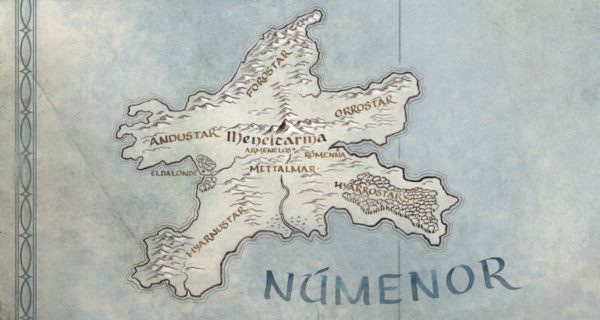Most of you probably know about the lengthy friendship of J.R.R. Tolkien and C.S. Lewis. You may know that they were in a writer’s group known as the Inklings. You may even know that Tolkien was largely responsible for Lewis’ return to Christianity after the latter spent the majority of his adult life as an atheist. But you may not be completely aware of the significant influence they had on each other’s work.
Tolkien and Lewis were both discouraged by the lack of good science fiction and the rampant dehumanization that took place at the time. As a fan of classic science fiction (I own several volumes of short stories from the 40’s, 50’s and 60’s), I can sympathize. These books either elevate human progress to point of becoming a religion, or they denigrate humanity until the reader is incurable pessimistic by the end. Either way, the two friends decided they were going to do something about it. Tolkien was to write a time travel story, and Lewis was to write about space travel. Lewis ended up writing not one, but three books, called the “Space Trilogy”, while Tolkien, ever the perfectionist, never finished his first.
In the first book of the Space Trilogy, Out of the Silent Plant Elwin Ransom, a university professor, who is kidnapped by a scientist on a mission to Mars. He departs from the earth in a spherical craft, and lands on the red planet. The rest of the book concerned with Ransom’s adventures on Mars, or Malacandra as the natives refer to it. Ransom meets the various races that inhabit Malacandra, including the Eldila, (singular, Eldil) who are angelic beings. I’ll try not to give away any spoilers, but it’s a fascinating book, and you should really read it. Its sequel, Perelandra, chronicles Ransom’s adventures on the planet we refer to as Venus.
The final book (and in my opinion, the most interesting), That Hideous Strength, is very different from the others, in that it takes place entirely on earth. What’s interesting about it is the way Lewis blends Science Fiction and Fantasy into a seamless fabric, adding ideas from his other works, such as The Abolition of Man (which I am currently reading, and you should, too). What’s more, Lewis relies heavily on the work of J.R.R. Tolkien. For example, the language spoken by Lewis’ alien beings bears a great similarity to one of Tolkien’s Elvish languages.
If you’ll recall, in The Lord of the Rings, Tolkien references the ancient city, known as Númenor. In Tolkien’s stories, Númenor was synonymous with the mythological city of Atlantis. It is known among Tolkien aficionados that he never intended his Middle Earth stories to be taken as purely fantasy; they take place in the “real” world, some time in the very distant past, sort of a pseudo-history. All of the locations in The Lord of the Rings have real world counterparts, so it should come as no surprise that Númenor would have a “real world” counterpart. That is, if one assumes (like Tolkien and Lewis did) that Atlantis was real.
Getting back to the Space Trilogy, Lewis makes use of the concept of Atlantis in That Hideous Strength. Moreover, Lewis sometimes used Tolkien’s name for the place, connecting his Science-Fiction story with Tolkien’s Fantasy sagas. In a way, one could think of the Space Trilogy as a follow up to The Lord of the Rings.
By now, you (like me, when I first read it) are probably mind-blown by all this. Could it be that Frodo’s voyage to the Undying Lands was not the end of the story? From what I know of Tolkien, he would not have intended that to be the “end” in the way we think of an end; just a new beginning. Lewis simply picked where Tolkien left off. Perhaps I’m reading too much into it, but that’s what I would like to think. It is a testament to the artistic talent of two great authors; but it’s more than that: it’s a testament to a friendship that spawned a universe of characters and ideas, and led to two of the greatest literary masterpieces of the 20th century.
If you’ve already read The Lord of the Rings and you’re wanting to hear about what happened afterward, you need look no further than C.S. Lewis’ Space Trilogy.

